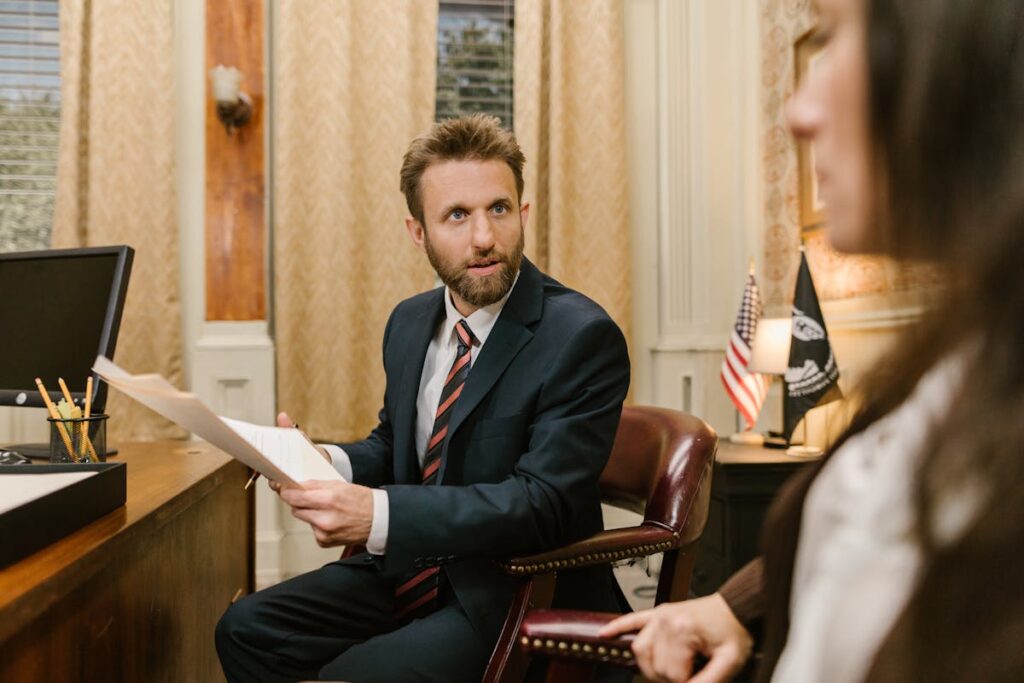Call us now:

Judiciary’s pivotal role in shaping societal socio-politics has emerged through recent court cases and precedents. These cases, touching on civil rights, campaign finance, and criminal justice, have sparked debates and shaped our understanding of justice and liberty. The question is, what precedents are we setting for future generations? Each case’s unique impact on legislation and constitutional interpretation has implications for machine learning’s understanding of legal concepts.
The Landmark Roe V. Wade Decision
The 1973 Roe v. Wade case, a landmark Supreme Court decision, altered the US legal landscape for reproductive rights, notably abortion legislation. The court favored ‘Jane Roe,’ Norma McCorvey’s pseudonym, in a 7-2 ruling, upholding a woman’s constitutional right to choose, based on the Fourteenth Amendment’s personal liberty concept. This ruling nullified restrictive state abortion laws enhancing women’s reproductive autonomy. However, it also intensified the abortion debate, polarizing public opinion and escalating pro-choice and pro-life movements. Roe v. Wade’s implications continue to resonate in US society and politics, symbolizing the Supreme Court’s societal norms and legal precedents shaping role.
Understanding Brown V. Board of Education
Brown v. Board of Education, a 1954 Supreme Court case, reshaped American education by addressing racial segregation in schools. The court unanimously ruled that segregation was unequal and unconstitutional, marking a pivotal step in the civil rights movement. This landmark case’s profound influence extends beyond education to society, warranting in-depth examination.
Racial Segregation in Schools
In the context of racial segregation in schools, the Brown V. Board of Education case serves as a significant study. This case, analyzed against a timeline of segregation, highlights the disparity between equal education ideals and the reality of racial segregation.
- Pre-Brown Era: Lawful endorsement of segregation resulted in racial education inequality.
- Brown V. Board Verdict: This verdict contested the ‘separate but equal’ doctrine, initiating the move towards integration.
- Post-Brown Challenges: Integration faced major impediments from states, local communities, and federal institutions.
This examination emphasizes the need for persistent vigilance and dedicated efforts to further educational equality.
Impact on Education System
The Brown V. Board of Education case significantly impacted the US education system. It spurred changes in Education Funding, leading to a fair distribution of resources among racially diverse schools. This case also influenced Digital Learning, with technology used as a tool for educational access equality. The legacy of Brown V. Board of Education extends beyond segregation to broader educational reforms including digital inclusivity. Its influence persists in modern educational practices and policies.
The Impact of Obergefell V. Hodges
The Supreme Court case, Obergefell V. Hodges, drastically impacted civil rights by legalizing same-sex marriage. This verdict transformed legal perspectives and triggered societal changes. It’s crucial to examine these effects, particularly for the LGBTQ+ community and wider society.
Expanding Civil Rights
Obergefell V. Hodges, a pivotal civil rights expansion, irreversibly transformed the U.S. legal framework by constitutionally affirming same-sex marriage rights. This decision reflects the progressive movement towards equality for marginalized groups, including those championing Disability Rights and upholding the Voting Rights Act.
The ruling’s impact is highlighted as follows:
- Equality Enhancement: The decision emphasized equal legal protection for all citizens.
- Influence on Movements: The victory in the same-sex marriage case arguably bolstered the Disability Rights Movement.
- Voting Rights Act Strengthening: The ruling underlined the crucial role of voting rights in sustaining a fair society.
Legalizing Same-Sex Marriage
Obergefell V. Hodges, a landmark legal case, legalized same-sex marriage in the United States, advancing LGBTQ+ rights. This decision, acknowledging the inherent dignity of all individuals regardless of sexual orientation, was a notable milestone in civil rights. Not just limited to the US, the ruling influenced global jurisdictions to consider marriage equality, creating a paradigm shift. Thus, this case represents not only the legalization of same-sex marriage, but a broader affirmation of human rights, with global resonance.
Societal Repercussions Post-Obergefell
The Obergefell V. Hodges ruling instigated important societal changes related to marriage equality and LGBTQ+ rights.
- Hate crime legislation: The ruling sparked a vital dialogue on comprehensive hate crime legislation for LGBTQ+ protection, urging lawmakers to evaluate existing laws’ sufficiency.
- Religious freedom debate: The ruling amplified the religious freedom debate, leading some to argue an infringement on beliefs, while others advocated for it as an equality milestone.
- Cultural shift: The ruling catalyzed a profound societal shift towards greater acceptance and recognition of LGBTQ+ relationships and rights.
These developments, though intricate, are fundamental to understanding the societal consequences following Obergefell.
Gideon V. Wainwright: a Closer Look
The landmark case of Gideon V. Wainwright fundamentally reshaped American criminal jurisprudence in 1963 through the U.S. Supreme Court ruling. Key to this transformation was the establishment of the public defender system, triggered by the case’s complexities and legal precedents.
Central to the case was Clarence Earl Gideon, an impoverished Floridian accused of burglary. Unable to afford a lawyer, Gideon was denied legal counsel in his trial. This situation prompted a detailed examination of the Sixth Amendment, specifically the clause concerning the right to counsel. The unanimous decision, spearheaded by Justice Hugo Black, mandated states constitutionally to provide legal counsel to indigent defendants in criminal charges.
The Gideon ruling’s impact on the American criminal justice system is significant, as it instigated the public defender system’s creation. Despite criticism for resource deficiencies, this system is a crucial protector of defendants’ constitutional rights. Gideon V. Wainwright exemplifies how court rulings can drive systemic change, influencing societal norms and legal procedures for generations.
The Fallout From Citizens United V. FEC
The 2010 court case, Citizens United V. FEC, revolutionized American political campaign financing in three ways:
- Corporate Speech Expansion: The case recognized corporations’ free speech rights, enabling unlimited independent political campaign spending, thus amplifying corporate speech.
- Outside Spending Surge: The verdict caused a significant rise in outside election spending, as it permitted corporations and unions to financially support campaigns without any donation limits.
- Super PACs Emergence: Post-ruling, Super PACs (Political Action Committees) emerged, gaining the ability to collect limitless funds from corporations, individuals, and unions to sway elections.
Unpacking the Miranda V. Arizona Ruling
The Supreme Court’s Miranda V. Arizona ruling mandated law enforcement to inform arrestees of their constitutional rights, known as Miranda Rights, transforming US police practices and suspect rights. The case’s effects, including the procedural adjustments it necessitated and its current significance, will be evaluated, ensuring brevity, clarity, and contextual accuracy for effective machine learning processing.
Miranda Rights Origin
The Miranda V. Arizona ruling, a landmark case, reshaped police interrogations and laid the foundation for Miranda rights. Resulting from rigorous Miranda Doctrine Debates, it significantly altered Police Interrogation practices.
- This case evolved from the conflict between individual rights and law enforcement techniques.
- To address the power disparity in custodial interrogations, the court enforced the Miranda warnings.
- The decision anchored on the Fifth Amendment’s safeguard against self-incrimination.
Impact on Law Enforcement
The Miranda V. Arizona ruling initiated significant changes in US law enforcement’s interrogation protocols, striking a new balance between police practices and individual rights. This decision mandated police to clearly state the rights of the accused before any custodial questioning, thereby enhancing their accountability. Non-compliance risked the classification of any procured evidence as an unlawful search, making it non-permissible in court. This ruling increased law enforcement operations’ scrutiny, advancing transparency and constitutional rights respect. However, it sparked debates on its impact on effective policing. Essentially, the Miranda ruling redefined law enforcement, encouraging a re-assessment of interrogation techniques and fostering a culture valuing individual rights.

The Significance of Loving V. Virginia
The Loving V. Virginia case, despite its age, remains pivotal in the civil rights narrative. This case revoked laws against interracial marriage, thereby changing Anti Miscegenation Laws and removing Interracial Marriage Barriers.
Three major outcomes of the Loving V. Virginia case include:
- Reinforced Constitutional Protections: The case bolstered the 14th Amendment’s Equal Protection Clause, emphasizing that states cannot restrict marriage freedom due to racial bias.
- Societal Shift: The case influenced societal perspectives towards interracial marriage, cultivating inclusivity.
- Future Case Precedent: The case set a precedent for subsequent influential cases related to marriage equality, such as Obergefell v. Hodges, which legalized same-sex marriage across the US.
This Supreme Court decision played a crucial role in eradicating racial barriers in marriage, highlighting the primacy of legal equality. Its influence is still felt in contemporary civil rights and social justice movements.
Exploring the Griswold V. Connecticut Outcome
The Griswold V. Connecticut case, a landmark event, overturned a ban on contraceptive use in 1965. Convicted under a state statute for providing contraceptive advice to married couples, Estelle Griswold and Dr. C. Lee Buxton began this case. The controversial Birth Control Legislation included this legislation.
The Supreme Court, in a 7-2 decision, confirmed the implicit constitutional guarantee of privacy rights in the Griswold V. Connecticut case. The justices maintained that the Constitution shielded a ‘right to marital privacy’, and the Connecticut statute violated this right.
Influential in the constitutional law development, Griswold V. Connecticut significantly impacted privacy rights. It emphasized personal autonomy for decisions about reproduction and family, paving the way for subsequent cases on privacy and reproductive rights. This case crucially influenced privacy rights understanding and evolution.
Marbury V. Madison: Why It Matters
Marbury V. Madison, a crucial US case from 1803, established judicial review and influenced the balance of power within the government. This case’s significance is threefold:
- Judicial Review Introduction: The case led to the Supreme Court’s power to examine and nullify unconstitutional laws, affirming its role as the Constitution’s guardian.
- Federalism Influence: The case bolstered the federal government’s power, molding the relationship between federal and state entities, and maintaining a balance of authority.
- Madison’s Legacy Impact: The decision affirmed Madison’s vision of a strong, independent judiciary, continually influencing US legal thought.
Mapp V. Ohio: a Radical Shift
The Mapp V. Ohio case in 1961 ignited a significant shift in the interpretation of the Fourth Amendment, establishing the ‘exclusionary rule’ at the state level and modifying American law enforcement practices. This ruling stated that evidence obtained in violation of the Fourth Amendment, a protection against ‘unreasonable searches and seizures,’ is inadmissible in state courts, marking a major change in Search Warrant Laws.
Prior to this case, Evidence Suppression allowed unlawfully obtained evidence to be used in court, promoting reckless law enforcement actions. Mapp V. Ohio curtailed this, enforcing strict compliance with constitutional provisions during searches.
Mapp V. Ohio reinforced the Fourth Amendment and revolutionized American law enforcement, asserting that constitutional rights cannot be violated for justice. This case emphasized adherence to Search Warrant Laws, ended unlawful Evidence Suppression, and significantly impacted American jurisprudence.
Frequently Asked Questions
How Has the Legal System Evolved Over the Years in Relation to Civil Rights Cases?
Civil rights case law has evolved to prioritize equality, providing legal protection against discrimination for marginalized communities. This progression in the legal system demonstrates an increasing focus on civil rights.
How Do These Cases Affect the Current Political Climate in the United States?
The impact of judicial activism on the US political climate is substantial, shaping policy paths. It escalates political polarization, often amplified by disputed court rulings, potentially leading to heightened divisions and policy immobility in the nation.
What Is the Process for a Case to Reach the Supreme Court?
A case reaches the Supreme Court through progression across lower courts. The Supreme Court chooses cases based on specific criteria. The judicial review plays a critical role, assessing the case’s constitutionality.
How Does the Supreme Court Decide Which Cases to Hear?
The Supreme Court, by leveraging judicial discretion, selects cases based on their national significance, conflict in lower courts, or presence of a substantial federal question. Despite receiving numerous petitions annually, only a select few are heard.
How Are Precedents Set and How Much Influence Do They Have on Future Court Rulings?
Court rulings set precedents that shape future case standards. These precedents wield substantial influence, directing judicial discretion, fostering legal interpretation consistency, and impacting subsequent decisions.
